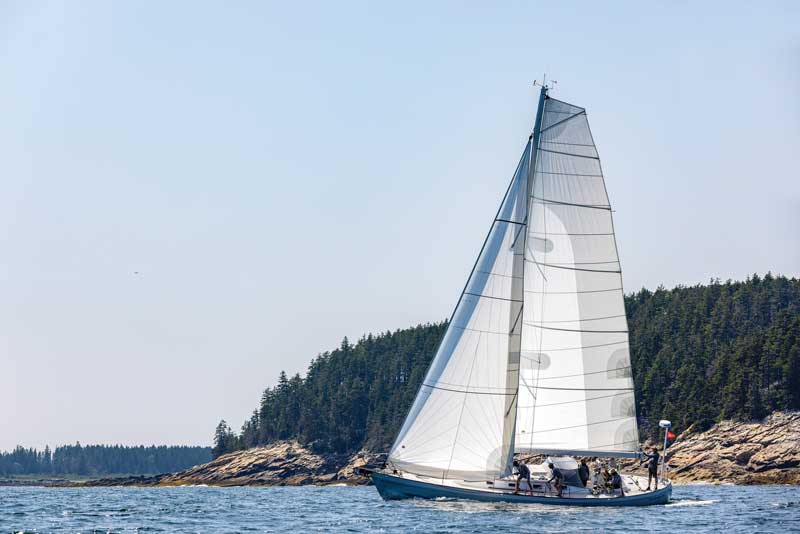 Refitted with a new carbon-fiber mast and boom, and a more powerful flat-top mainsail, Zingara has a modern, easier to handle sail plan. Photo by Alison Langley
Refitted with a new carbon-fiber mast and boom, and a more powerful flat-top mainsail, Zingara has a modern, easier to handle sail plan. Photo by Alison Langley
Zingara’s journey over the past 30 years is that of a unique, perhaps slightly fringe boat that has been loved, neglected, and loved anew. It’s a story of evolution, innovation, and a desire to embrace heritage and history while making careful updates and improvements. It’s also a journey that resonates with those looking to breathe new life into a beloved boat with thoughtful and economical updates.
We were first introduced to Zingara in the mid-1990s, and immediately recognized that the boat was exceptionally well built and had a wonderful shape. Originally designed by Bill Peterson, the boat was conceived to participate in the 1990 BOC—the British Oxygen Company Challenge, a solo ’round-the-world yacht race that eventually became known as Around Alone and, later, The Velux 5 Oceans. But before the start in Newport, Rhode Island, the owner’s project fell apart.
The hull design is contemporary, yet let’s admit that it is unique to see a double-ender in today’s world. Still, it shows a successful mix of elements that achieve both aesthetic beauty and a modern hull design, with lines that describe a powerful modern shape that translates into a light-displacement vessel, with fast curves that help make this a nimble and very easily sailed boat—that also happens to be great to look at.
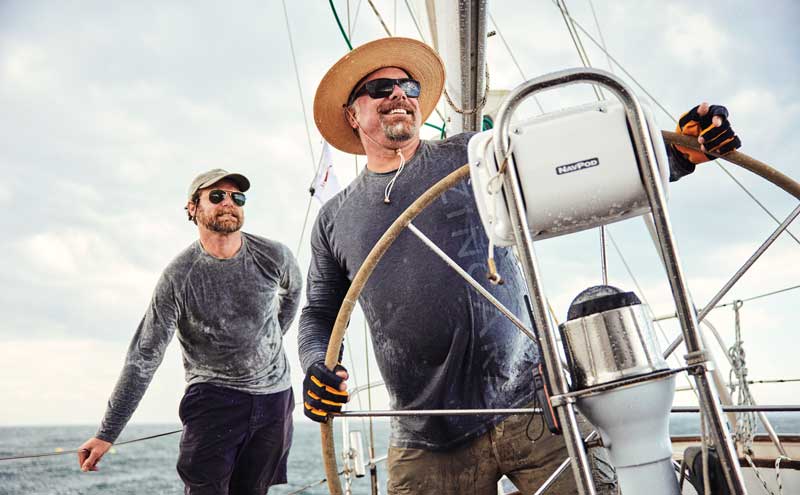 Designer Paul Waring at the wheel of Zingara enjoying the upgrades. Photo by Michael D. Wilson
Designer Paul Waring at the wheel of Zingara enjoying the upgrades. Photo by Michael D. Wilson
When first we met Zingara, the yacht was a long way from finished and the designer was long out of the picture. The boat’s original striking looking but wildly impractical rotating wing mast had disappeared into the dusty corners of some Rhode Island boatshed, and the original owner had passed away. It was the year 2000, and a new owner was ready to remodel and redesign Zingara to fit his ideas more aptly. He selected Brooklin Boat Yard for the project, where we worked as the in-house design team—a good training ground for what would later become Stephens Waring Yacht Design.
The design brief: Re-imagine the yacht as a moderate cruiser with a yawl rig and then oversee the project’s construction.
Over the following 10 months, we worked from a bare hull, redesigning the half-built yacht, replete with yawl rig, a rearranged deck plan, new cockpit and interior layout, and a complete systems and mechanical refit. It was a total gut-rehab project of a boat that had never yet been used, just barely conceived.
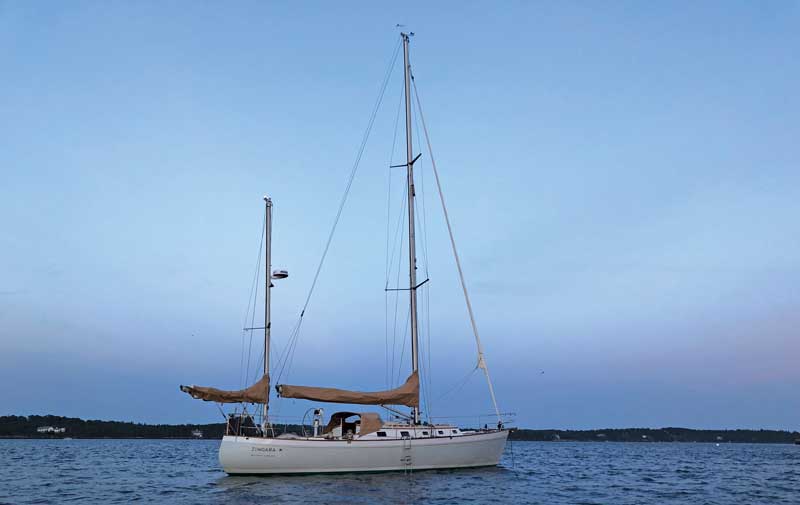 Originally built for single-handed, around-the-world racing, Zingara’s second owner chose to change to a yawl rig for cruising.
Originally built for single-handed, around-the-world racing, Zingara’s second owner chose to change to a yawl rig for cruising.
Our client envisioned a solid, practical boat for cruising, with no plan for racing. We translated these goals with a vision that made the best use of the yacht’s potential as a solid sailing yacht. Topsides, a revamped sailing platform required the deck and cockpit to be seakindly and functional in bluewater conditions. Down below, the interior was to be spacious and comfortable, safe and relatively simple. This ‘less-is-more’ approach was quickly embraced by all of us.
Next, the re-imagined Zingara would have a yawl rig that was conservative by its humble sail area. This sail plan was important to this second owner, who valued the classic touch as well as the flexibility and maneuverability that a headsail, main, and mizzen sail combination offers. Furthermore, the yawl arrangement enjoyed solid appreciation by cruising sailors. The mizzen mast is a great place to mount electronics and a radar antenna, and it can also serve more practical “cruising” uses like hanging laundry and shower heads, for instance.
Zingara was finally launched in 2001 as a very capable, seaworthy cruising boat with moderately high performance, which met all of her owner’s needs. He was able to enjoy long-distance, short-handed cruising together with his spouse as they explored up and down the coasts of Maine and Nova Scotia.
The boat eventually was sold to a southern New England owner who enjoyed a moderate calendar of racing and light cruising with friends and family. He also used her as a summer home on the water in Nantucket for more than a decade. “It took a good breeze to get her going, but Zingara performed well in a wide range of conditions,” he said. Moreover, the improvements made by the team at BBY made for a quick and comfortable cruising yacht.
Zingara comes home to roost
In 2020, Zingara was once again on the market and we purchased her in the fall. It was a time when we had been grappling with a philosophical question of how to spend more time with family and close friends. How to sail in the places and with the people that meant the most to us. We were clear on the goals, but had only a vague idea of how to get there.
Reuniting with Zingara checked all the boxes. Beyond having all the surface-level criteria met, we also found an emotional connection drawing from our deep involvement in creating her. We spent the next season, 2021, getting to know her.
After a couple of seasons of cruising and racing as new owners, our connection to the boat was galvanized. However, we couldn’t help thinking about improvements and tweaks that would allow the boat to reach an even greater potential. We also recognized the journey and transformation would open a path for other sailboat owners to follow suit and allow them to learn from our trials and tribulations in the process.
Where to begin? Our modernizing efforts began in 2022. It was an exercise in optimizing the sailing platform by designing a modern rig and sail plan, and working to improve how we might work and live aboard the boat.
In essence, Zingara offered us an opportunity to implement our philosophy for planning a modern design, from rig and sails to deck layout and gear. The tweaks and modifications we made to Zingara reflected many ideas tested and built for SWD clients over the years. We were bringing to life the very stuff we’ve written about, and we were illustrating the best of our skills and value engineering—a true grass-roots Spirit of Tradition program.
Once we committed to the task, we set out to make the boat comfortable, modern, and functional. This began with identifying a set of core priorities that would deliver the most bang for the buck: improve light air sailing; improve and optimize the sailing platform; and simplify Zingara by reducing the amount of clutter on deck.
At the core of the project was our idea for a modern sail plan that required a large mainsail, smaller working jib, and an asymmetrical reaching sail such as a code zero for sailing off the wind. This is all the sail we need for most days, and in the process, we went with a more efficient square-headed main to boost its horsepower.
Besides sail inventory, we made the biggest change by modifying our boat’s rig from a yawl to a sloop. With the shroud base set as wide as possible to eliminate overlapping sails, we reduced all loads on the spars and rigging as much as we could—thereby reducing weight aloft and increasing stability. Our stability calculations indicated the optimum path would be to increase overall sail area by 20 percent. Sounds easy, but there are lots of devils lurking when it comes to the details.
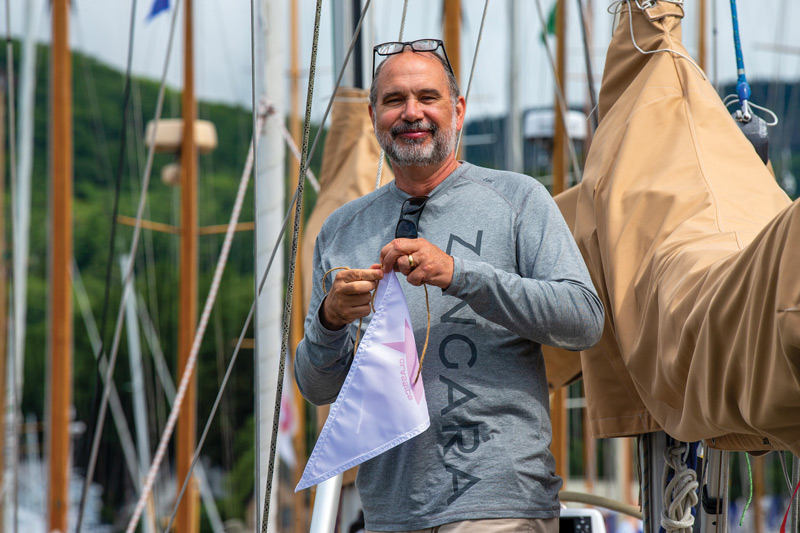 Bob Stephens readies Zingara for some regatta action. Photo by Alison Langley
Bob Stephens readies Zingara for some regatta action. Photo by Alison Langley
Weight versus costs
Zingara’s previous yawl design was busy, with two aluminum masts, booms, and a birdcage of wire standing rigging. The weight and drag of all of these factors weighed into the stability of the vessel, the sail-carrying power, and the aerodynamic drag.
The rigging also had been in service for more than 20 years. We would need to replace everything: halyards, clutches, standing rigging, furler system, and sails. When we measured the cost of all this and then added in the money for mast and boom, the ratio of these parts was on the smaller side of the entire budget. Aluminum tube costs are roughly half to a third that of carbon-fiber tubes, but in the overall cost benefit, the lion’s share goes to everything else: sails, rigging, hardware, etc. This made our change to a sloop that’s optimized to our preferences a win-win.
Working with Moore Brothers, in Bristol, Rhode Island, we tapped into the deep skills and experience of a team building some of the more complex composite components available. Using their smart production system and ability to reuse existing tooling, we were able to build a carbon mast and boom at a reasonable cost.
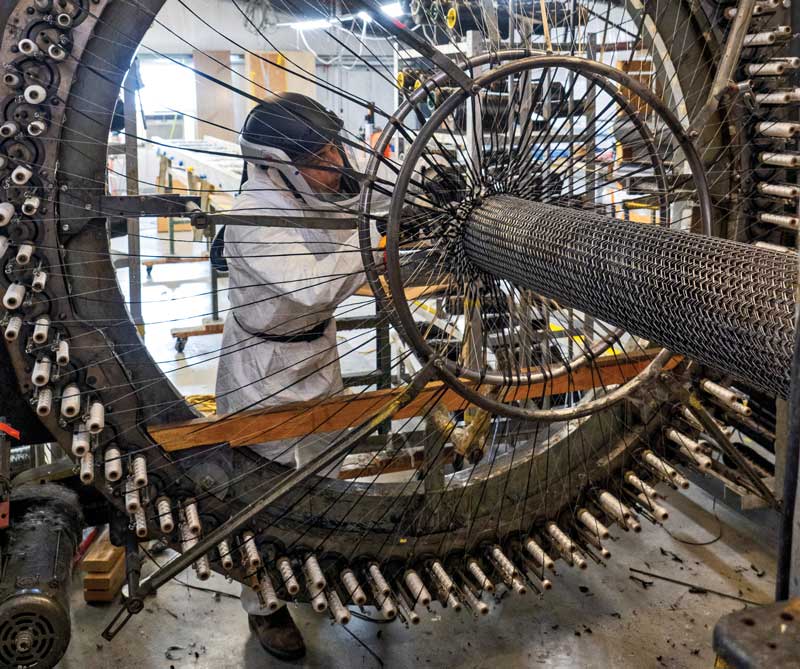 The carbon-fiber braiding machine at Moore Brothers produced a light-weight mast at an affordable price. Photo courtesy Moore Brothers.
The carbon-fiber braiding machine at Moore Brothers produced a light-weight mast at an affordable price. Photo courtesy Moore Brothers.
Among the cool tools and tricks that Moore Brothers use to build wild composite parts is a braiding machine. This intimidating-looking contraption looks something like an oversize weaving loom or a medieval torture device. It’s designed to spin strands of composite reinforcement onto a mandrel as the mandrel is passed through its central circle.
For Zingara’s mast, striking a balance between cost savings and weight savings was our goal, and using the Moore Brothers’ machine rather than a traditional (and more expensive) pre-preg carbon-fiber layup allowed us to stretch our finances at a weight penalty of less than 10 pounds. Had we gone with aluminum the weight penalty would have been in the triple-digit range.
Besides the carbon-fiber mast and boom being overall lighter than aluminum ones, the slamming weight in a jibe is reduced. Another advantage is cosmetic: Paint will last longer on a composite boom than on aluminum, and there’s no worry about the dissimilar metals of any fittings.
Compared with an aluminum yawl rig at 850 pounds, the new carbon-fiber sloop rig weighed in at 400 pounds. This brought the total vertical center of gravity down 4 inches. That’s an increase of righting moment equal to several burly people on the rail.
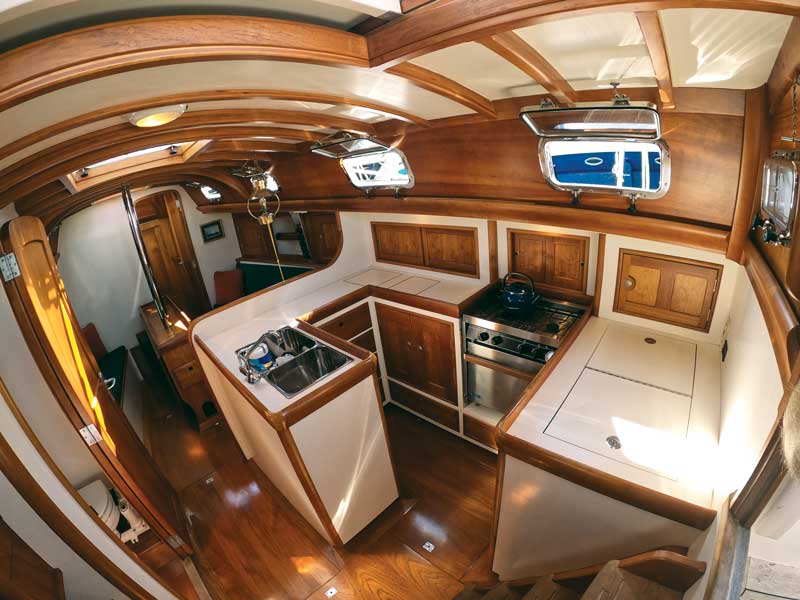 Zingara’s simple interior reflects a “less is more” approach to design. Photo Courtesy Wellington Yacht Partners
Zingara’s simple interior reflects a “less is more” approach to design. Photo Courtesy Wellington Yacht Partners
The process of working with Moore Brothers allowed us to rethink the carbon fabrication process in a way that utilized existing tools and technologies in novel ways. It set a path to design and fabricate custom components using standardized methods, which in turn provided cost savings and a path for other owners to follow suit.
Last year, we were finally able to reap the bounty of her transformation. Zingara is fast, efficient, and a pleasure to handle on the race course or cruising with family and friends. The boat’s design still embraces the past while continuing to turn heads in marinas as an elegant yet innovative boat. Best of all, the project has illuminated the path and process for bringing new life to an old boat.
✮
Bob Stephens and Paul Waring are the principals at Stephens Waring Yacht Design in Belfast. Their firm specializes in Spirit of Tradition designs for sail and power.






